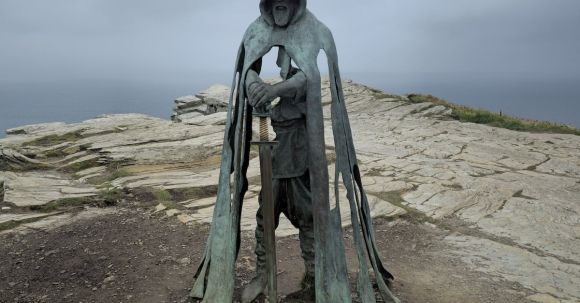The legend of King Arthur and his Knights of the Round Table has captivated people’s imaginations for centuries. But was there really a historical figure behind these stories, or are they nothing more than myths and legends? While the historical evidence is scarce and often contradictory, there are some intriguing theories that suggest there may have been a real King Arthur.
The Origins of the Legend
The earliest references to King Arthur can be found in Welsh texts from the ninth and tenth centuries. These texts mention a legendary figure named Arthur who fought against the invading Anglo-Saxons. However, these early sources provide little historical detail and are more concerned with celebrating the heroism and virtues of Arthur.
Historical Evidence
When it comes to historical evidence, the picture becomes less clear. There are no contemporary accounts of King Arthur, and most of what we know about him comes from later medieval sources. These sources, such as Geoffrey of Monmouth’s Historia Regum Britanniae, provide us with the familiar tales of Arthur’s court, his battles against the Saxons, and his search for the Holy Grail. However, these accounts were written hundreds of years after the events they describe and are likely to be a mixture of fact and fiction.
The Battle of Badon
One of the few events that may be linked to a historical King Arthur is the Battle of Badon. This battle is mentioned in several early sources, including the Historia Brittonum and the Annales Cambriae, and is said to have taken place in the late fifth or early sixth century. According to these accounts, Arthur led the Britons to a decisive victory over the Saxons at Badon. While the details of the battle are sketchy, the fact that it is mentioned in multiple sources suggests that it may have some basis in historical fact.
Archaeological Discoveries
In recent years, archaeologists have made some intriguing discoveries that could shed light on the King Arthur legend. In 1998, a team of archaeologists excavating at Tintagel in Cornwall, England, uncovered the remains of a large medieval hall. This discovery has led some to speculate that Tintagel may have been the site of King Arthur’s court. However, the link between Tintagel and Arthur is purely speculative, and there is no concrete evidence to support this theory.
The Role of Myth and Legend
While the search for a historical King Arthur continues, it is important to remember the powerful role that myth and legend play in shaping our understanding of the past. The Arthurian legends have inspired countless works of literature and art, and have become an integral part of our cultural heritage. Whether or not there was a real King Arthur, the stories and ideals associated with him continue to resonate with us today.
Conclusion
In conclusion, the question of whether there was a real King Arthur behind the legends is still open to debate. While the historical evidence is limited and often contradictory, there are some tantalizing clues that suggest there may have been a historical figure behind the stories. The Battle of Badon and the archaeological discoveries at Tintagel provide some intriguing connections to the Arthurian legends. However, until more concrete evidence emerges, the true identity of King Arthur is likely to remain a mystery. Regardless of whether he was real or not, the legend of King Arthur will continue to capture our imaginations and inspire us for generations to come.





